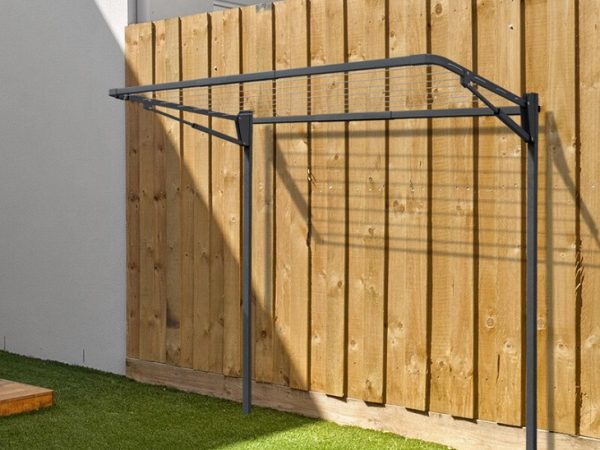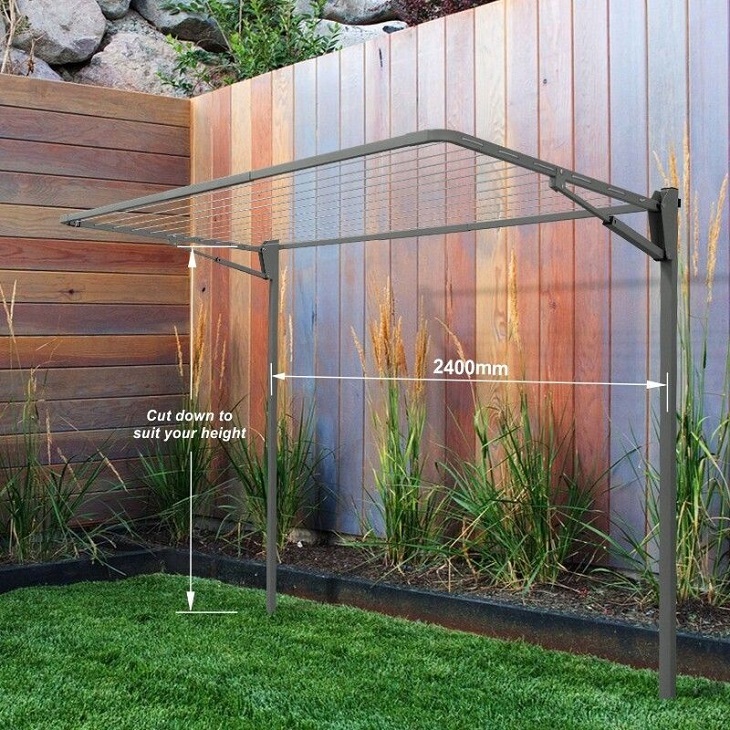23
Feb

Looking for energy-efficient ways to dry clothes? Look no further than the traditional and so hard to beat clothesline. It will save you money and energy plus the clothes smell great after drying in the fresh air!
Choosing the right line for drying clothes, however, can be overwhelming given the wide range of options available. With this in mind, we have compiled a list of all the important things to take into account when shopping for the ideal model your household needs.

The highly versatile and stylish clothes lines for sale come in a wide range of styles and sizes, so you’ll have no difficulties finding the model that will best serve your needs. However, these are the most popular designs.
The fold-down model is one of the easiest and most common ways to dry clothes. When compared to traditional styles, the fold-down clothes line is fairly modern.
Besides their appearance, this particular type comes with many benefits. They can be folded down when not in use and stored, for example, in your outdoor shed. Additionally, they can be secured to the ground, or wall-mounted. Furthermore, folding frame clotheslines are available in a variety of sizes.
In terms of aesthetics, they can also be painted to complement the wall on which they will be installed. While being extremely space-efficient, this clothesline is not ideal for large families because it does not have a lot of line space.
Although the fixed-head rotary clothes lines for sale are one of the most traditional types, they are still the top choice for the majority of Australian homeowners. It is referred to as a fixed head rotary since the head of this design can’t be folded down and away; instead, it spins. It is conceivably the strongest and toughest clothesline on the market right now.
You should choose a fixed-head rotating clothesline if you routinely dry large amounts of garments at once. To make it easier to load and retrieve laundry, the head of the clothesline can also be raised in addition to spinning. However, make sure your garden or backyard has enough space if you plan to use the fixed-head style.
These days one of the newest styles of clothesline available is the retractable one. It is the style designed to imitate a cabinet and must be fastened to a wall. Usually, four to six retractable lines can be extended and connected to a book hung on the wall on the other side of the cabinet. Depending on the type you purchase, the lines can be stretched anywhere between 30 and 50 meters.
The best thing about retractable clothes lines is their fair price and large hanging capacity. However, when purchasing stay away from models made of plastic especially if you plan to hang big loads of clothes.

Installation and removal shouldn’t involve a funny break from the routine. So, look for a clothesline that is easy to install and remove to avoid fumbling around and squabbling with problematic parts.
In this regard, the spring-operated locks should be reliable and precisely snap into place. All of the parts should fit together perfectly snugly and flawlessly. As a result, installation and disassembly will be straightforward to carry out while still being stable and vibration-free.
One of clotheslines’ best features is their convenience. They are the perfect solution for homes located in unfavourable seasonal weather areas, as they allow homeowners to take down and store their clothes in a few seconds.
Moreover, some homes need their outdoor area to be entirely accessible for small gatherings or celebrations on regular basis. In these situations, outdoor retractable clotheslines are particularly helpful as they can be easily folded and stored before the guests arrive.
To make the drying process straightforward and more effective, some clothes lines are packed with additional features such as changing heights and spinning tops.
A spinning top makes it simpler to hang your clothes outside to dry as there is no need to circle the rack to access open lines—just position the garments and rotate the top. Because you don’t have to run around removing clothes and clothespins, taking off the clothing is quite easy. The adjustable heights, on the other hand, enable the hanging up of clothes of various sizes.
The right placement will only increase the functionality of your clothesline. Consider your space when setting up. As a general rule, you need at least 300mm of space in front of the clothesline, so you have room to stand there without risking having the clothesline slam into your head or body when you open it.
To stick up to the height standards, never install an outdoor clothesline lower than the primary user’s head height as this will force them to constantly hunch their necks or backs to hang clothes. It should typically be placed between 100 and 150 millimetres above the primary user’s head height. Avoid placing the clothesline too high.
The dimensions of the clothesline as well as the minimum amount of space required for a practical installation are therefore specified in the size guide. Contact the manufacturer if you are in doubt or have some difficulties understanding the sizing chart and other useful information.